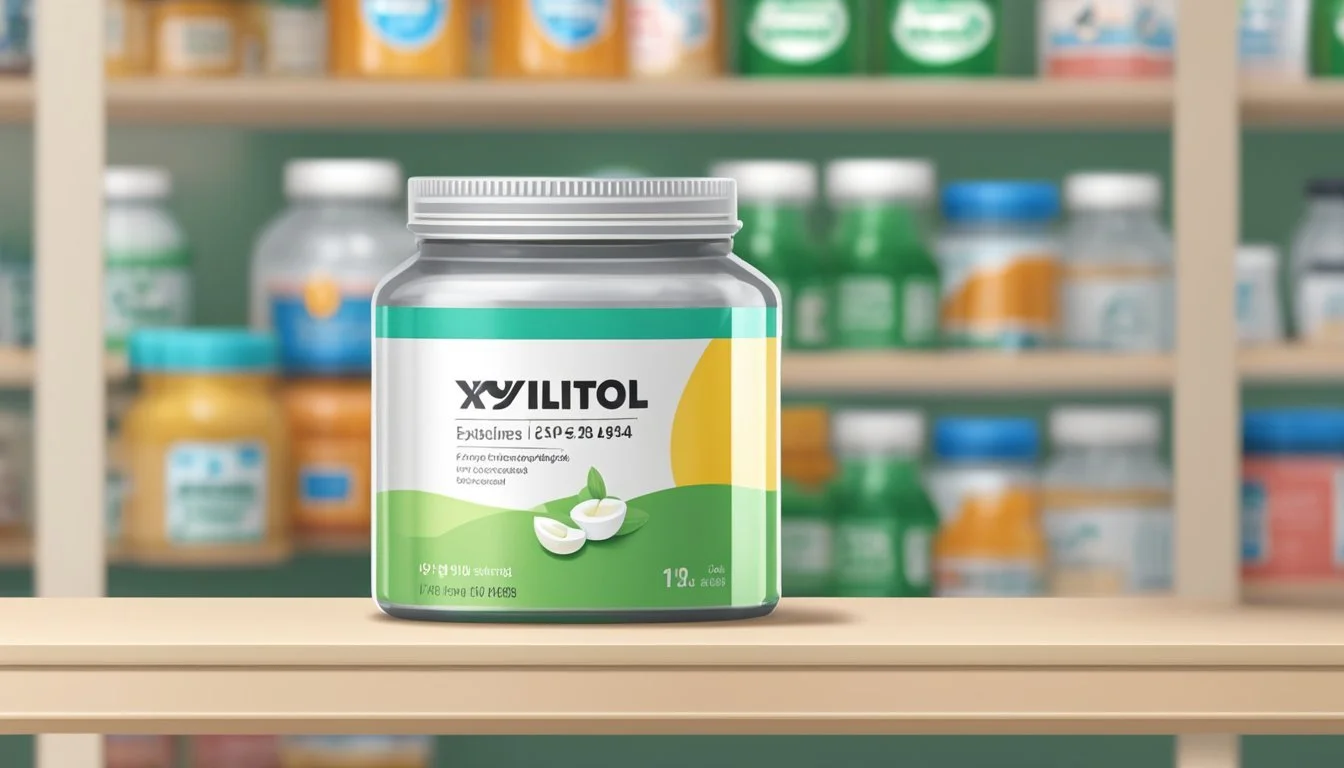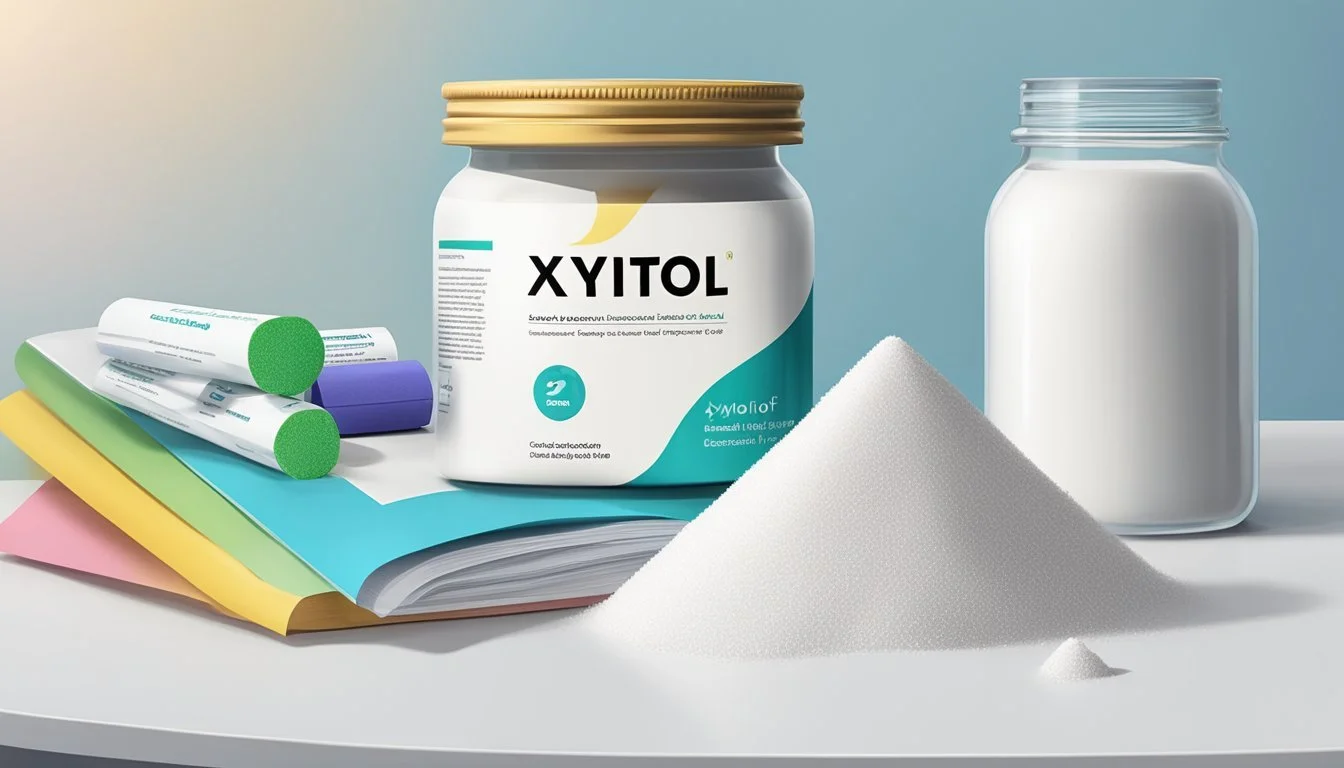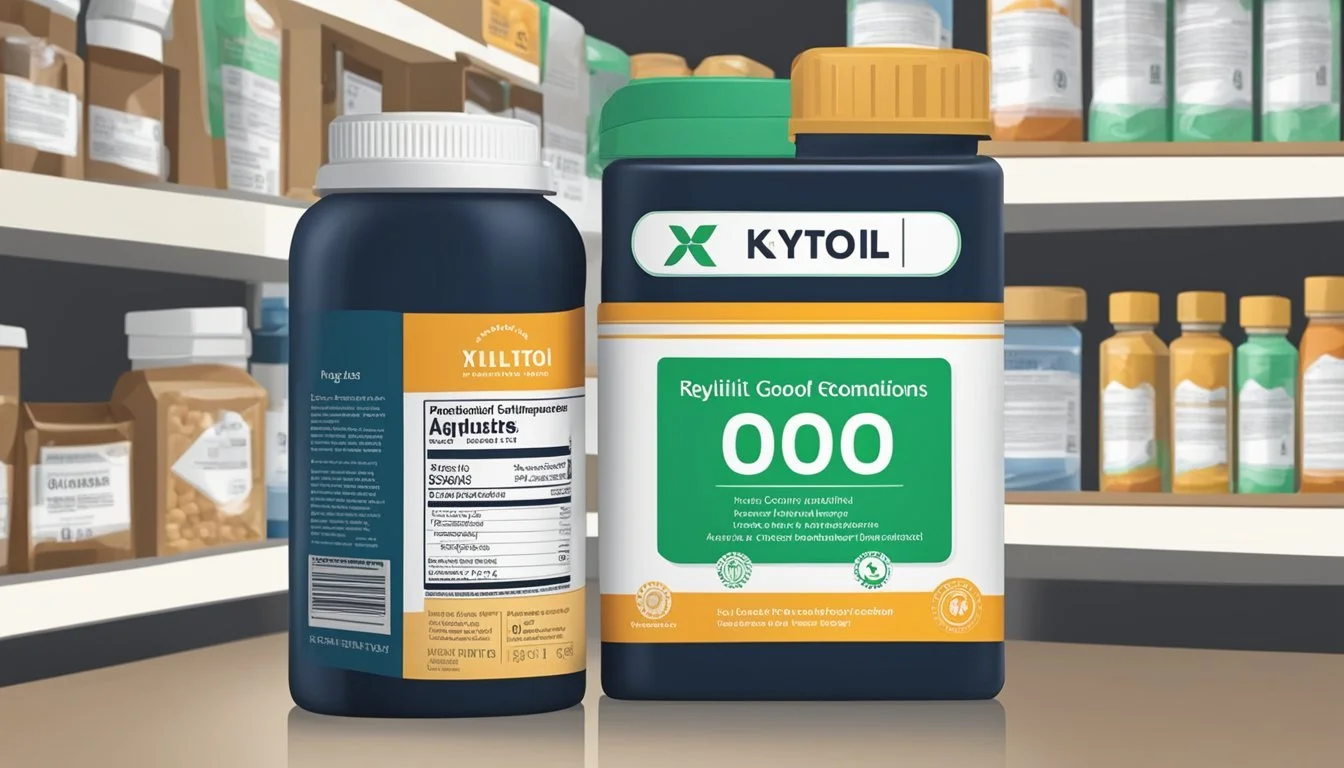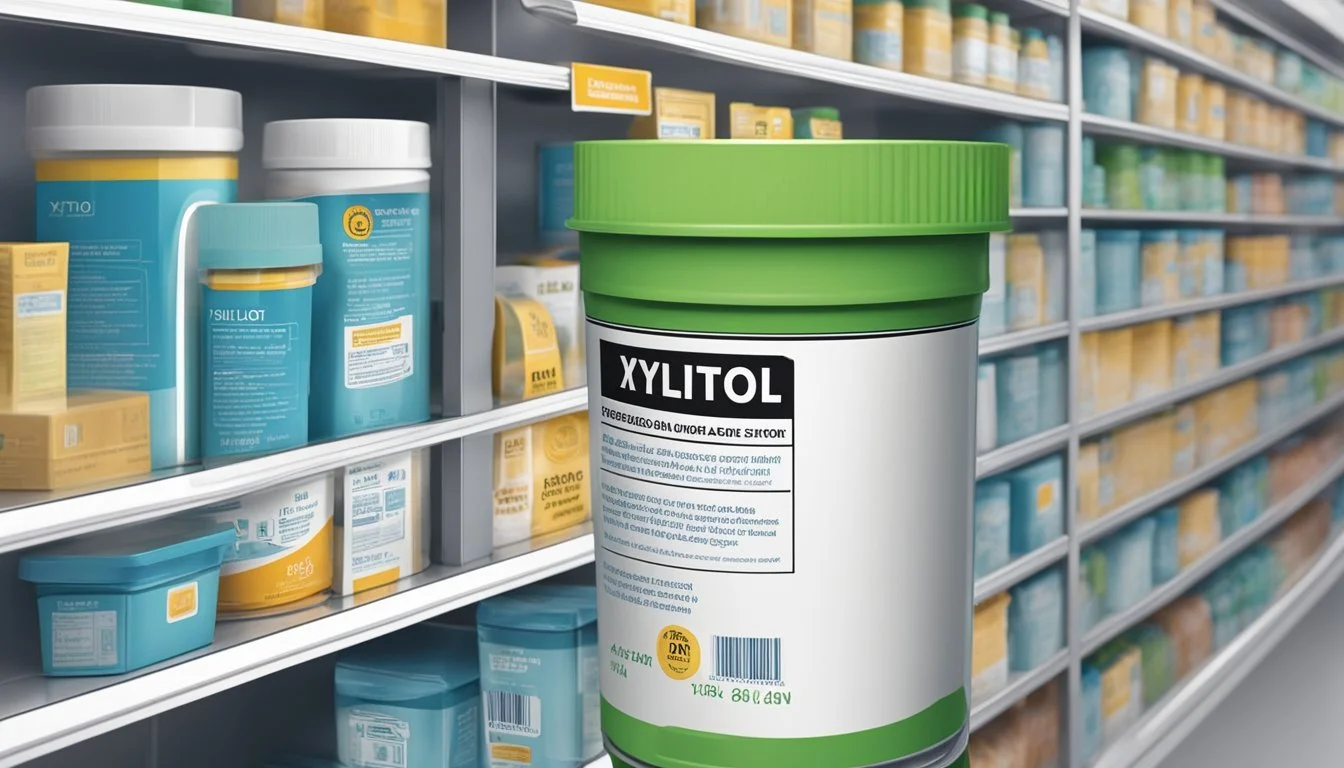Does Xylitol Go Bad?
Shelf Life and Storage Tips
Xylitol, a popular sugar alcohol, is often used as a sweetener in various products such as gum, candy, and toothpaste. While many people appreciate its lower calorie content and low glycemic index, there is curiosity about its shelf life. Xylitol does not typically go bad in the way that perishable items do, but it can degrade in quality over time if not stored properly.
Proper storage is key to maintaining the quality of xylitol. It should be kept in a cool, dry place, away from direct sunlight and moisture. If stored correctly, xylitol can last for several years without losing its effectiveness or sweetness.
Despite its stability, users should regularly check for signs of contamination or moisture, which could affect its quality. By understanding how to store xylitol correctly, consumers can extend its shelf life and safely enjoy its benefits.
What Is Xylitol?
Xylitol is a type of sugar alcohol. Unlike traditional sugars, it has a chemical structure that includes an alcohol group, which gives it unique properties.
Naturally, xylitol occurs in small amounts in many fruits and vegetables. It's also produced by the human body during normal metabolism.
This carbohydrate is often used as a sugar substitute in various products. Chewing gums, candies, mints, and diabetes-friendly foods frequently contain xylitol due to its sweet taste and lower caloric content.
Xylitol has about 40% fewer calories than regular sugar. This makes it a popular choice for those looking to reduce their calorie intake while still enjoying sweet flavors.
One distinction of xylitol as a sugar substitute is its effect on oral health. It doesn't contribute to tooth decay, which is why it's found in many oral-care products like toothpaste and mouthwash.
The chemical structure of xylitol is similar to sugar but includes an extra alcohol group. This allows it to provide sweetness without the negative effects associated with regular sugar.
Xylitol’s benefits extend beyond just being a sweetener. Its use in various food products and health items highlights its versatility and growing importance in the food and health industries.
Benefits of Xylitol
Xylitol offers several benefits, particularly in the realms of dental health and metabolic control. These advantages make it a popular choice for those looking to manage caloric intake, diabetes, and overall oral hygiene.
Dental Health Advantages
Xylitol is commonly found in products like toothpaste and gum. It is known for reducing plaque accumulation and aiding in the prevention of tooth decay. Regular use of xylitol-containing products can inhibit the growth of harmful bacteria in the mouth. This can lead to better dental care and decreased risk of cavities. Its ability to disrupt the formation of plaque is particularly significant in maintaining oral health.
Low Glycemic Impact
With a low glycemic index, xylitol causes a smaller increase in blood glucose levels compared to regular sugar. This can be beneficial for people looking to maintain stable glucose levels. Since it does not cause sharp spikes in blood sugar, it is often recommended for those at risk of heart disease and other metabolic disorders. This characteristic makes it a preferred choice for individuals managing diabetes and other similar conditions.
Caloric Intake and Obesity
Xylitol contains fewer calories than regular sugar—approximately 40% fewer. This lower caloric intake can help in the management of obesity and support weight loss efforts. By substituting sugar with xylitol in the diet, individuals can enjoy sweet flavors without the same caloric burden. This makes xylitol an attractive alternative for those looking to reduce their overall calorie consumption without sacrificing taste.
Diabetes Management
For people with diabetes, managing blood glucose levels is crucial. Xylitol is less likely to cause blood sugar spikes, making it a safer option for diabetics. This sugar substitute can sometimes be found in diabetes-friendly foods and snacks. Its use helps maintain more stable glucose levels, which is vital for diabetes management. Additionally, its inclusion in diet and food products provides a sweet-tasting option without the negative impact on glucose control.
Xylitol in Foods and Products
Xylitol, a popular sugar substitute, is widely used in various processed foods and consumer products. Its usage is particularly prominent in sugar-free items, as well as in dental care products.
Presence in Processed Foods
Xylitol can be found in an array of processed foods. It is especially common in baked goods such as cookies, muffins, and cakes, where it provides sweetness with fewer calories. Some candies also use xylitol, including mints and lollipops, to offer a sugar-free alternative. Additionally, xylitol is added to certain beverages and dairy products, aiming to offer a lower-calorie option without compromising on taste.
Usage in Sugar-Free Products
Sugar-free products benefit greatly from the inclusion of xylitol. It is prominently featured in sugar-free gum, which is not only lower in calories but also has dental benefits. Various sugar-free candies and desserts utilize xylitol to cater to consumers looking for healthier alternatives. Even some soft drinks and sports drinks include xylitol to provide sweetness without the added sugars, making them more appealing to health-conscious individuals.
Inclusion in Dental Care Products
Xylitol is a key ingredient in many dental care products. It is found in toothpaste and mouthwash due to its ability to help reduce the risk of tooth decay by inhibiting the growth of harmful bacteria. Chewing gum containing xylitol is also recommended by dental professionals, as it can help in maintaining oral hygiene by stimulating saliva production, which neutralizes the acids in the mouth. Products like dental wipes and oral sprays often incorporate xylitol for its beneficial properties in promoting dental health.
Risks and Side Effects
Xylitol, while a useful sugar substitute, is not without its risks and potential side effects. Key areas of concern include digestive issues, toxicity in dogs, possible allergies, and general dietary considerations.
Digestive Concerns
Xylitol can cause significant digestive discomfort when consumed in large amounts. People might experience bloating, gas, and diarrhea due to its effects on gut bacteria.
Sugar alcohols like xylitol, along with erythritol, sorbitol, mannitol, and isomalt, can lead to digestive upset. They are not absorbed efficiently by the gut.
Gradually increasing xylitol intake may help some people minimize these side effects. It is also wise to be aware of the total amount of sugar alcohols consumed from all food sources.
Toxicity in Dogs
Xylitol is extremely toxic to dogs. Even small amounts can cause severe health issues, including hypoglycemia (dangerously low blood sugar levels) and liver damage, which can be fatal.
Dog owners should be vigilant in keeping xylitol-containing products out of reach. Symptoms in dogs include vomiting, loss of coordination, and seizures. Immediate veterinary care is crucial if ingestion is suspected.
Pet owners should check labels of products carefully to ensure they do not contain this potentially deadly substance for their animals.
Potential for Sugar Alcohol Allergies
Some individuals may have allergic reactions to sugar alcohols, including xylitol. Though rare, these allergic reactions can include symptoms such as hives, rash, or more severe reactions like trouble breathing.
Those with known allergies to other sugar alcohols, like sorbitol or mannitol, should exercise caution with xylitol. Testing small amounts initially can help determine if an allergy exists.
Consultation with a healthcare provider is recommended for those who suspect they may have such an allergy.
Dietary Cautionary Notes
It's important to consider all sources of xylitol in the diet. Many reduced-sugar products, gums, and toothpastes contain xylitol.
While beneficial for reducing sugar intake, excessive consumption may pose risks. Reading labels and monitoring intake from all sources can help manage and minimize potential side effects.
Dietitians and healthcare professionals can provide guidance on safe levels of xylitol consumption, especially for individuals with specific health conditions or sensitivities.
Nutritional Profile
Xylitol, a popular sugar substitute, has specific nutritional characteristics that differentiate it from other sweeteners. Below, we discuss its caloric content, how it compares with other sugar alcohols, and its vitamin and mineral content.
Caloric Content
Xylitol contains fewer calories than traditional sugars. Specifically, it provides around 2.4 calories per gram, compared to the 4 calories per gram typically found in table sugar. This lower caloric value makes xylitol an appealing option for those managing their calorie intake. Additionally, xylitol's low glycemic index means it has a minimal impact on blood sugar levels, making it suitable for people with diabetes or those on low-carb diets.
Comparison with Other Sugar Alcohols
When compared to other sugar alcohols, xylitol's caloric content is relatively moderate. For instance, erythritol contains about 0.2 calories per gram, making it lower in calories than xylitol. On the other hand, sorbitol and maltitol have higher caloric values, with 2.6 and 3 calories per gram, respectively. Xylitol's balance of sweetness and lower caloric impact often makes it a preferred choice over these alternatives. Its similarity in taste and texture to sugar also gives it an edge in many culinary applications.
Vitamins and Minerals
Xylitol is predominantly composed of carbohydrates, with very few vitamins or minerals present in significant amounts. Unlike fruits and vegetables, which are rich sources of essential nutrients, xylitol does not contribute vitamins or minerals to your diet. Therefore, while it may function well as a sugar replacement in reducing caloric intake, it should not be relied upon for micronutrient needs. It remains important to consume a balanced diet rich in whole foods to ensure adequate intake of vitamins and minerals.
Xylitol and Health Research
Xylitol, commonly used as a low-calorie sweetener in various products, has been subjected to extensive health research. It shows different effects on dental health, blood sugar levels, weight metabolism, and heart health.
Effects on Dental Health
Xylitol is extensively praised for its dental health benefits. It reduces the risk of dental caries by inhibiting the growth of harmful oral bacteria like Streptococcus mutans. This bacteria is known for causing cavities. Regular consumption of xylitol-containing products such as gum and toothpaste has shown to improve dental health significantly. In clinical trials, participants using xylitol-enriched products reported fewer cavities and better overall oral hygiene.
Impact on Blood Sugar Levels
Xylitol has a very low glycemic index, making it suitable for people monitoring their blood glucose levels. Unlike regular sugar, xylitol does not cause a spike in blood sugar and insulin levels. This quality makes it a favorable sugar substitute for individuals with diabetes. Studies have shown that xylitol consumption causes minimal impact on blood glucose levels, helping in the management of diabetes.
Influence on Weight and Metabolism
As a low-calorie sweetener, xylitol aids in weight management. It provides fewer calories per gram compared to regular sugar, which can help reduce overall calorie intake. This reduction can contribute to weight loss and obesity prevention. Additionally, it has been noted that xylitol does not negatively influence metabolism, making it a safer alternative for weight-conscious individuals.
Research on Heart Health
Recent research, including a study published in the European Heart Journal and investigations by the Cleveland Clinic, has raised concerns about the cardiovascular implications of xylitol. Findings suggest an association between high xylitol intake and an increased risk of heart attack and stroke. The studies indicate that xylitol may promote clot formation, posing risks for cardiovascular events. However, it is essential to note that these findings are observational and require further investigation for conclusive evidence.
Regulatory Status and Recommendations
Xylitol is recognized by the Food and Drug Administration (FDA) as safe for consumption. It is included in the list of Generally Recognized As Safe (GRAS) substances.
Its status as a GRAS additive means it has been reviewed and approved for use in food and beverages.
Regulatory guidelines outline specific maximum allowable levels for the use of xylitol in various products. These guidelines help ensure consumer safety.
European food safety authorities also permit the use of xylitol as a food additive. Authorities like EFSA have conducted evaluations similar to those carried out by the FDA.
Safety Considerations include recommendations for moderate consumption due to potential gastrointestinal issues such as bloating and diarrhea. These side effects are associated with consuming large amounts of sugar alcohols.
It is crucial to adhere to regulatory guidelines to avoid adverse effects. Public health agencies stress the importance of consuming xylitol within the recommended limits.
Industry Standards are in place to guide manufacturers in the safe usage of xylitol. These standards emphasize compliance with both national and international regulations.
Understanding the regulatory landscape is important for consumers and manufacturers. Proper labeling and adherence to guidelines ensure that xylitol remains a safe additive in the food industry.
Xylitol Storage and Shelf Life
Proper storage of xylitol can help maintain its quality and extend its shelf life.
Unopened xylitol generally remains effective for about two years past the best-by date indicated on its packaging.
Once opened, exposure to moisture, air, and contaminants can reduce its shelf life.
Unopened xylitol: Up to 2 years past best-by date
Opened xylitol: Best used within 6 months past the best-by date
Xylitol is commonly found in processed foods such as sugar-free gum, candies, and mints. To preserve its flavor and effectiveness, it should be stored in a cool, dry place. When stored properly, xylitol remains a reliable substitute for sugar, maintaining its characteristic sweetness even as its flavor may diminish over time.
Consumer Considerations
When considering xylitol, consumers should be well-informed about selecting products, exploring alternatives, and understanding its role in a balanced diet.
Choosing Xylitol Products
Consumers should look for products with clear labeling on xylitol content, especially if managing diabetes or seeking Sugar-Free options. It's critical to read ingredient lists carefully to avoid excessive consumption, as high intake can cause digestive issues like bloating and diarrhea. Xylitol is often found in sugar-free gum, candies, and toothpaste.
They should check for certification marks from trusted health organizations to ensure product safety and effectiveness. Consulting with healthcare providers, particularly for those with heart conditions or at risk of heart attack and stroke, helps make informed choices.
Alternatives to Xylitol
For those concerned about the health risks, there are several sugar substitutes available. Artificial sweeteners like aspartame and sucralose present popular alternatives but also come with their own set of concerns.
Natural sweeteners such as stevia and monk fruit offer sugar-free options that may be safer for individuals at risk of cardiovascular issues. Each alternative should be evaluated based on personal health needs and potential allergens. Researching each option helps consumers choose the best substitute that minimizes health risks.
Inclusion in Healthy Diets
Incorporating xylitol into a healthy diet demands mindful eating and balance. It’s beneficial for diabetics due to its low glycemic index, minimizing blood sugar spikes. However, individuals should limit consumption due to its potential laxative effects.
Xylitol can be a tool for reducing overall sugar intake, especially in baking and cooking. It's essential to combine xylitol use with a diet rich in whole foods like fruits, vegetables, and grains to maintain overall health. Regular monitoring of xylitol's impact on personal health helps sustain a balanced dietary approach.









